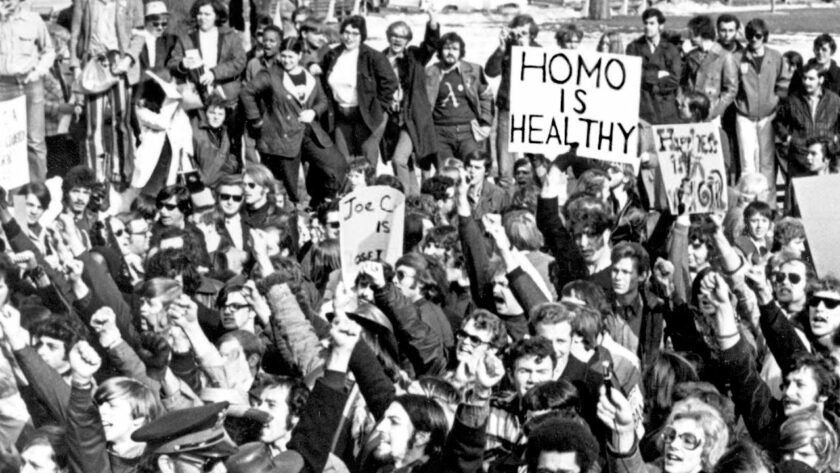I’ve watched too many meandering documentaries lately. That wouldn’t necessarily be a bad thing, were it not for the fact that I’m pretty sure that most of them weren’t really intended to be meandering. Some subjects – especially when the director isn’t particularly interested in covering them from an interesting angle – are simply best-served by a thorough, tightly-constructed exploration of the facts. Yet, what I tend to find myself watching is a flabby mess of loosely-related points with no throughline, no solid central driving force to bring it all together. All of this preamble to say that I’m thankful for Bennett Singer and Patrick Sammon’s Cured, a documentary whose concisely detailed craftsmanship I find myself appreciating more and more in retrospect.
Composing itself from archival footage and stills, newly-discovered audio recordings, and recent interviews with the people who were directly involved, Cured examines the chapter of queer history that saw the American Psychiatric Association’s classify same-sex attraction as a mental illness – specifically a ‘sociopathic personality disturbance’ – in the first edition of the DSM (Diagnostic and Statistical Manual of Mental Disorders), and the subsequent, ultimately successful, fight by activists to overturn that decision.

Singer and Sammon present their story linearly, and it works in their favour. First, a wash of background; they sketch out the atmosphere of the 50s and 60s, the fear of same-sex attraction that escalated to disgust and vitriol – all legitimised by the APA’s classification of us as unwell and in need of a cure. This opening sets a precedent for how the documentary will balance itself, painting broader strokes of context to set the scene and push the narrative forward, whilst never forgetting to fill in finer details in a way that ensures the facts remain grounded in human emotion and experience.
Cured presses on through the decades, revealing the slow progress made by numerous activists and the various ways in which they attempted to convince the members of the APA to listen; from picket demonstrations in the mid-60s, to the infiltration of the 1970 APA convention, and beyond. Something I hadn’t quite expected from such a documentary is a tinge of humour, yet it is definitely there, most notably in the form of the infamous ‘mask incident’ of the 1972 APA convention, but also in the title of an impassioned presentation given the following year by activist Ron Gold – ‘Stop it You’re Making Me Sick!’ – and the occasional jokes made by those involved, both in their present-day interviews and the archival footage from their work at the time. This humour, when present, veers toward the absurd; not in a way that delegitimises the movement, but rather delegitimises those they’re fighting against. Because isn’t it absurd? That such measures as hiding behind an oversized Nixon mask in order to not lose your job to your identity while fighting a decision made without sound evidence were even necessary?
In a way, it’s easy to look upon the movement as absurd from a distance. Important, oh sure, but absurd all the same, too far-removed to feel immediate or instructionary. And yet, both here in the UK and in the US, conversion therapy is still legal, despite its disavowal by every major healthcare association. In fact, just last month the leader of the opposition decided to celebrate easter by visiting a church known for its open support of conversion therapy and opposition to same-sex marriage, calling it a “wonderful example” of a church serving its community. Cured only briefly draws the parallel to modern-day practices of conversion therapy, but it’s enough to make one wonder if we should be seeing these activists’ occasionally absurd methods as instructionary after all.




